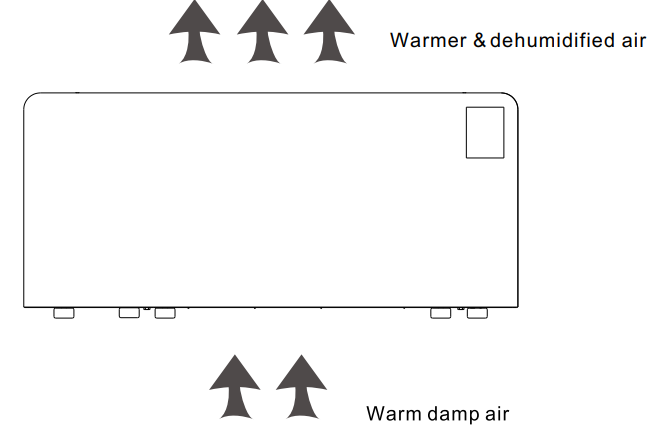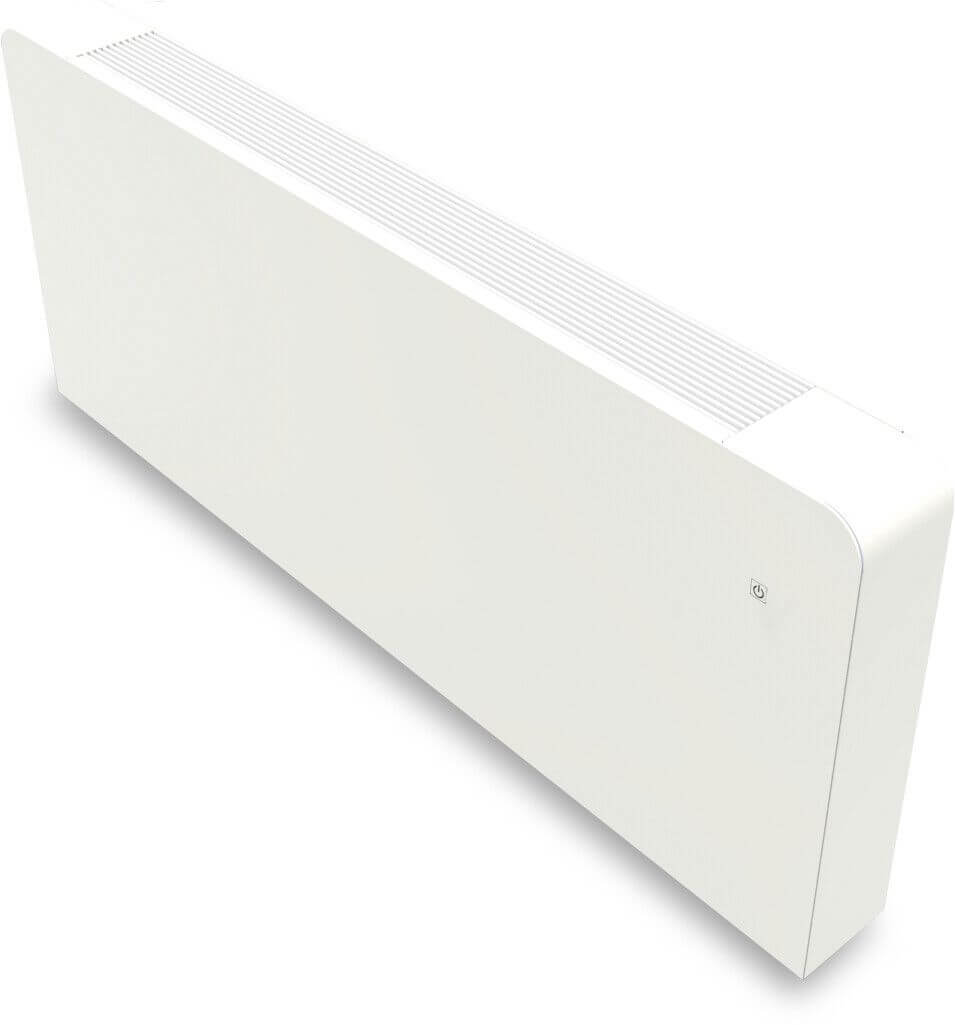- Last updated Oct 13, 2021
- Swimming Pool, Heating
Dehumidifier
Introduction
A dehumidifier reduces the humidity in the atmosphere and makes the environment more comfortable and, as a rule, healthier. Some offices and venues use them not only for home use. A dehumidifier is like a vacuum cleaner that draws air from one end of your room and draws moisture out of it and then blows it back into the room. Moisture flows into a storage tank that you need to empty from time to time. That’s where a dehumidifier becomes like an air conditioning unit. The quality of the air in your home is measured not only by the amount of toxins you breathe or not, but also by the humidity of the air.
It is not surprising that swimming pool rooms are very humid and prone to the growth of unwanted microorganisms with moisture. Due to the high traffic and closed indoor swimming areas, the swimming pool rooms are prone to increased humidity and the growth of mold and mildew. To ensure the health and safety of pool users, it is important to use dehumidifiers in swimming pool rooms. If the water in the room has condensed, it releases the required amount of heat back into the room before that water evaporates. Dehumidifiers are designed to control the humidity level in a room, so the air is more comfortable, and you notice few physical signs of damp air - mold on the walls or condensation on your windows.
Working principle
The working of dehumidifier consist of two steps
Extract Moisture from the Air: The fan of the dehumidifier drives the the humid air of the house through a cold coil (evaporator) which condenses the moisture from that air and collects the water through a drip tray to the tank or drain point. We end up in cold but dry air.
Reheat the dry air upwards: Bring the cold but dry air to the room temperature by running it over a hot coil (condenser). Re-fan the dry air back in the house.

The dehumidifier operates at the same time as a refrigerator and a heater.
The compressor drives the fan and the flow of refrigerant forward.
The fan draws moist air through the air inlet to the dehumidifier.
The humid air pass over a series of very cold coils (basically, a refrigerator). There the water from the air condenses in the cold coils.
The drip tray collects water in the water tank.
Now dry cold air will flow over the heated coils (basically, a heater).
The same fan that absorbs the humid air to the dehumidifier will now expel the dry air.

Refrigerant is an important part of how each dehumidifier works. Refrigerant is a liquid used in all types of appliances that require heat transfer - the simplest example is the refrigerator.
Refrigerant heat transfer is facilitated by a step-by-step transition from liquid to gas.
If you can create ventilation between these cold and hot coils, you have a dehumidifier for yourself.
That is why the important thing about how a dehumidifier works is to understand how the refrigerant works. The refrigerant flows into a closed tube, where it undergoes temperature changes, but the volume does not change. From the equation for the ideal gas,
p x V = nRT
It is clear that as the temperature changes, so does the pressure (since everything else remains constant). Such a process is called the isochoric process or constant volume process, whereas the refrigerant contact in the gas is compressed or expanded in volume.
Such a process - a thermodynamic process - is governed by the first law of thermodynamics.
In short, the physics behind how a dehumidifier works is quite complex. However, everyone can understand how a dehumidifier works on a macroscopic scale based on increasing and decreasing the temperature of the air flowing through the device.
Sizing a Dehumidifier
An efficient pool room dehumidifier can remove moisture from the air. Therefore, it will help you to avoid problems caused by pool evaporation. This is crucial for proper dehumidifier calculations. The larger the size, the more initial and operating costs it will be. On the other hand, if it is reduced, it will not remove the moisture completely. Therefore, it is necessary to provide the correct size.
Once we understand the source of moisture, we can determine the correct data. In the pool room, the difference between space and water temperature creates evaporation. In other words, the greater the difference, the greater the evaporation. Therefore, the moisture level will increase in less time. At the same time, the surface area of the water plays a crucial role. More exposed water will create more moisture on the surface.
The type of swimming pool also contributes to the effect. For example, the activity in a residential pool may be more than just a hotel pool. Therefore, we need to take into account the high uses when making calculations. Thus, the intensity of use is considered in the form of the "empirical coefficient".
Factors to consider
We need to consider the following data to design a dehumidifier calculator.
- Area of a swimming pool. A larger size will produce more moisture. Therefore, we need a high dehumidifier capacity.
- If the water is hot, it will evaporate quickly. Thus, the humidity in the room will increase rapidly. Therefore, we need to consider the maximum temperature of the water.
- To calculate the dehumidifier, we also need to consider the room temperature.
- The type of swimming pool will determine the frequency of its use.
Sample calculation
Now, let's look at an example of a residential swimming pool. The current indoor pool humidity level is around 90% RH and the owner wants it to be comfortable. For indoor pool rooms and spas, the comfortable humidity level is 60% RH. Therefore, indoor swimming pool dehumidifiers should reduce humidity to 60% RH.
The surface area of the swimming pool is from 7 m long and 3.5 m wide. Please note that this is a coverless pool. Therefore, the open surface area is 24.5 m². In addition, the air conditioner maintains a room temperature of 25 0C . And the water temperature in the pool should not exceed 30 0C . So, let us do the dehumidifier calculation.
We are going to use a simple equation. It is derived from all factors. Therefore, this method is suitable for residential and commercial pools. The formula for calculating the indoor pool dehumidifier is as follows.
W= e x A x (Pw - Pa)
Where:
W - Evaporation rate in g/h.
A - Pool water surface area in m² .
Pw - Water saturation pressure taken at the surface temperature of the water.
Pa - Saturation pressure at room air dew point.
e - Empirical coefficient in g/( m² x h x mbar)
The value of e are,
0.5 - Pool covered area
5 - Pool motionless area
15 - Small private pools
20 - Public swimming pool
28 - Pools for recreation and recreation
35 - Pools with water slides and significant wave formation
A = 7 x 3.5 = 24.5 m²
Temperature in °C | Water saturation pressure (Pw) in mbar |
| 0.01 | 6.12 |
| 2 | 7.06 |
| 4 | 8.14 |
| 10 | 12.28 |
| 14 | 15.99 |
| 18 | 20.65 |
| 20 | 23.39 |
| 25 | 31.70 |
| 30 | 42.47 |
| 34 | 53.25 |
| 40 | 73.85 |
Table. 1
From Table. 1, the value of Pw at a water temperature of 30 0C in a swimming pool is 42.47 mbar.
| Temperature in °C | Saturation vapor pressure in mbar |
| -18 | 1.5 |
| -15 | 1.9 |
| -12 | 2.4 |
| -9 | 3.0 |
| -7 | 3.7 |
| -4 | 4.6 |
| -1 | 5.6 |
| 2 | 6.9 |
| 4 | 8.4 |
| 7 | 10.3 |
| 10 | 12.3 |
| 13 | 14.8 |
| 16 | 17.7 |
| 18 | 21.0 |
| 21 | 25.0 |
| 24 | 29.6 |
| 27 | 35.0 |
| 29 | 41.0 |
| 32 | 48.1 |
| 35 | 56.2 |
Table. 2
From Table. 2, the value of p at an indoor temperature of 27 0C and a relative humidity of 60% RH at 35 mbar.
Since this is a residential pool, from the activity factor table, let us consider the functional factor e = 15
Therefore,
W = 15 x 24.5 x (42.47 - 35)
= 2745.23 g/h
= 2.745 L/h
W = 65.89 L/day
Therefore dehumidification capacity required is 65.89 L/day
